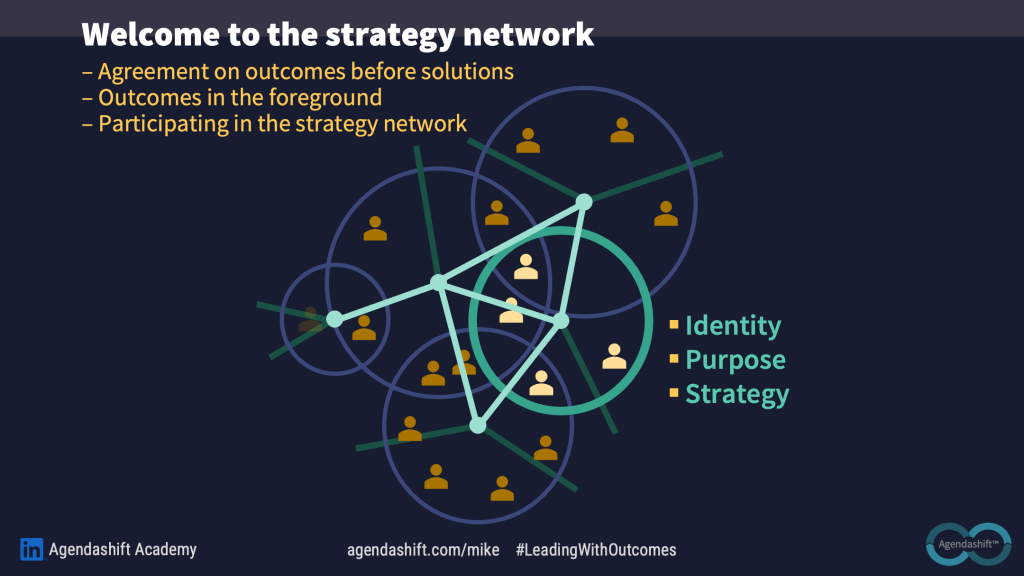Updates: Renamed network #2, minor edits elsewhere. This model is now included in the Agendashift Academy module Adaptive Organisation (II): Between spaces, scopes, and scales and the in-person training Leading in a Transforming Organisation. Video of my SEACON keynote here.
Expanding slightly on yesterday’s LinkedIn post (linkedin.com), your organisation in 5 networks:
Network #1: Your reporting network. This is just your formal structure – typically a hierarchy, perhaps with the occasional bit of dual reporting thrown in – seen here as lines of communication. Because sideways communication has to be implemented indirectly via upward and downward communication, it can be highly inefficient.
Network #2: Your delivery operations network. I am referring not to material flows or to the knowledge work equivalent, but to the interactions between people that make those flows what they are, performing as they do. In siloed organisations, the delivery operations network cuts across the reporting network, sometimes uncomfortably.
Network #3: Your strategy network. Typically richer than the reporting network, this connects everyone involved in anybody else’s strategic decision-making – any decision-making at any level of organisation that impacts on things like identity, purpose, objectives, learning, and adaptation. A more abstract and less messy version of this network connects not people but domains of responsibility at varying levels of granularity (see circular organisation).
Network #4: Your trust-building network. This is the network of all connections that are enhanced by meaningful efforts to build or maintain mutual trust. In a high-trust organisation, this can be expected to overlap significantly with the preceding three networks.
Network #5: Your social network: All the above and more – the totality of your organisation’s network of interaction and influence, covering all the conversations that contribute to making your organisation what it is and what it is becoming.
And two hypotheses (with caveats):
Hypothesis 1. The more that networks 2, 3, and 4 are healthy, the more that networks 1 and 5 look after themselves.
Hypothesis 2. The richer you can make them, the more likely is the serendipitous conversation, increasing the rate of innovation.
As rightly observed in some of the questions and comments on the first version of this post, these hypotheses are slightly in tension. Rich is good, richer would be better for many if not most organisations, and leaders within them would do well to pay attention to those networks. You can however have too much of a good thing, not to mention that some innovation happens in the darker corners, so to speak. In my use of the word “healthy” in hypothesis 1 I did intend a sense of balance, and I should have worked that sense into hypothesis 2 also. Instead though, this paragraph’s caveats 🙂
Some questions for you:
- In your organisation, which network or networks dominate?
- At what cost?
- Given where you sit in each of these networks and the reach that they afford you, what might you do?
Your answers, questions, or feedback can go on the original post (linkedin.com).
Agendashift™: Serving the transforming organisation
Agendashift Academy: Leading with Outcomes | Facilitator and Trainer Programmes
Links: Subscribe | Events | Contact | Mike
We help leaders and engaged team members at every level to gain fluency in the language of outcomes – developing and pursuing strategies together, innovating, learning, and adapting as the organisation renews and transforms itself from the inside.
PS The slide below is adapted from the talk I gave last week at SEACON (the Studies in Enterprise Agility Conference).

